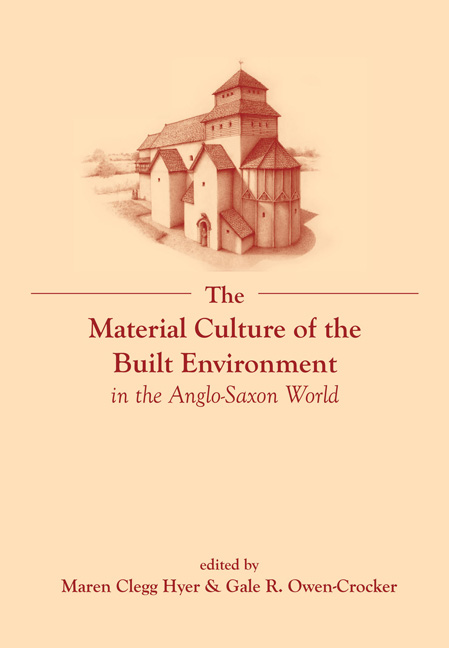Book contents
- Frontmatter
- Dedication
- Contents
- List of Figures
- List of Tables
- List of Contributors
- Introduction
- 1 Enta geweorc: The Ruin and its Contexts Reconsidered
- 2 Roads and Tracks in Anglo-Saxon England
- 3 Domestic Dwellings, Workshops and Working Buildings
- 4 Place and Power: Meetings between Kings in Early Anglo-Saxon England
- 5 The Cuckoo and the Magpie: The Building Culture of the Anglo-Saxon Church
- 6 Landmarks of Faith: Crosses and other Free-standing Stones
- 7 Landmarks of the Dead: Exploring Anglo-Saxon Mortuary Geographies
- 8 Boundaries and Walls
- 9 The Landscape of Late Saxon Burhs and the Politics of Urban Foundation
- 10 Signalling Intent: Beacons, Lookouts and Military Communications
- Notes
- Suggested Reading
- Index
5 - The Cuckoo and the Magpie: The Building Culture of the Anglo-Saxon Church
- Frontmatter
- Dedication
- Contents
- List of Figures
- List of Tables
- List of Contributors
- Introduction
- 1 Enta geweorc: The Ruin and its Contexts Reconsidered
- 2 Roads and Tracks in Anglo-Saxon England
- 3 Domestic Dwellings, Workshops and Working Buildings
- 4 Place and Power: Meetings between Kings in Early Anglo-Saxon England
- 5 The Cuckoo and the Magpie: The Building Culture of the Anglo-Saxon Church
- 6 Landmarks of Faith: Crosses and other Free-standing Stones
- 7 Landmarks of the Dead: Exploring Anglo-Saxon Mortuary Geographies
- 8 Boundaries and Walls
- 9 The Landscape of Late Saxon Burhs and the Politics of Urban Foundation
- 10 Signalling Intent: Beacons, Lookouts and Military Communications
- Notes
- Suggested Reading
- Index
Summary
I have decided after long deliberation about the English people … that the idol temples of that race should by no means be destroyed, but only the idols in them. Take holy water and sprinkle it in these shrines, build altars and place relics in them. For if the shrines are well built, it is essential that they be changed from the worship of devils to the service of the true God.
Pope Gregory to Mellitus, archbishop of Canterbury, AD 601Introduction
Christianity lacks architecture of its own. For its first three centuries of existence it had no dedicated buildings, as Christians met in private houses: the original meaning of ecclesia is simply ‘congregation’. Under Constantine, the Church adopted the religious, civic and imperial architecture of the Roman Empire. As Christianity spread through Anglo-Saxon society this process of appropriation and adaptation continued, and was never far from the practice of secular life. Churches could be Roman basilicas of reused brick or Germanic halls of timber; they could be converted from pagan temples or laid out by kings in imitation of Charlemagne's imperial church in Aachen. Architectural elements such as naves, towers and mausolea were constructed to different iconographic schemes or practical requirements, and could be sheathed in metal, plaster or carved stone. This chapter will draw upon archaeological, architectural and literary evidence to trace the influences and social practices underpinning the different forms of Anglo-Saxon church building – and the materials used in their construction – much of which would have been familiar to ordinary Anglo-Saxons as part of their experience of daily life.
There have been numerous attempts over the past century to identify standing structures from the Anglo-Saxon period. Churches represent a unique and extremely valuable opportunity to experience standing Anglo-Saxon buildings, in contrast to many other secular types of buildings, for which we must rely on excavated plans and reconstructions. Several hundred Anglo-Saxon churches and fragments of churches survive above ground across England, ranging in date from the reputedly Roman chapel of St Martin in Canterbury, reused in the 590s by the Kentish royal house, to the many ‘overlap’ churches from the decades either side of the Conquest which demonstrate the survival of Anglo-Saxon construction after 1066.
- Type
- Chapter
- Information
- Publisher: Liverpool University PressPrint publication year: 2015

